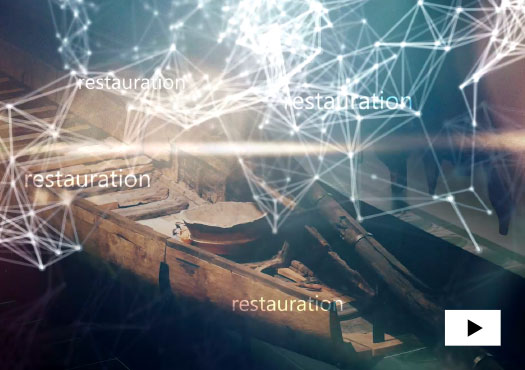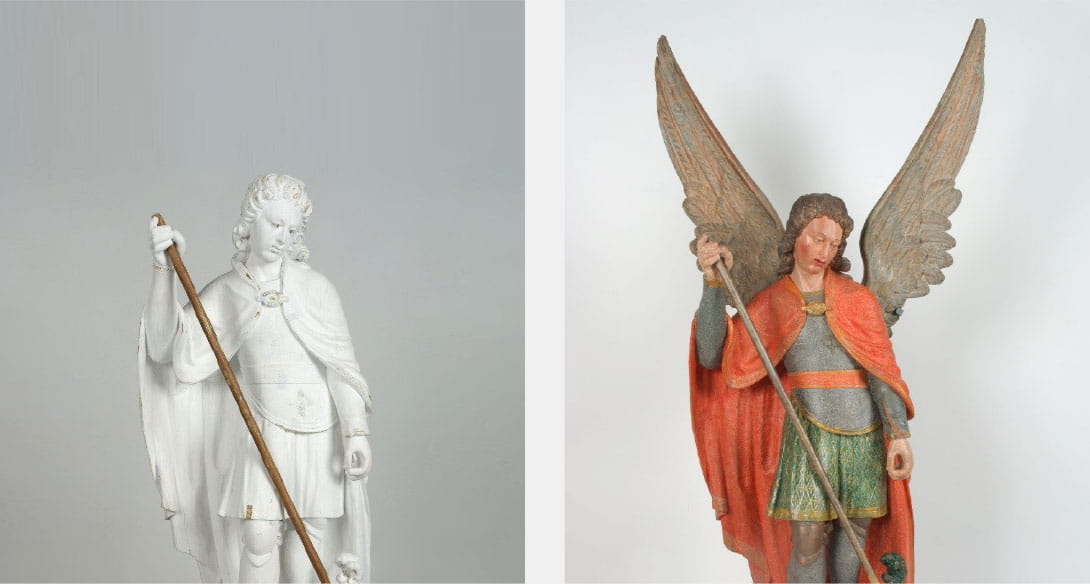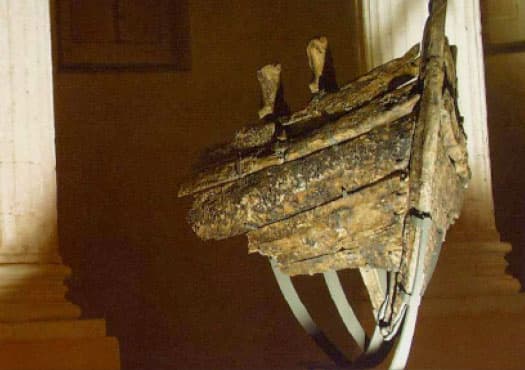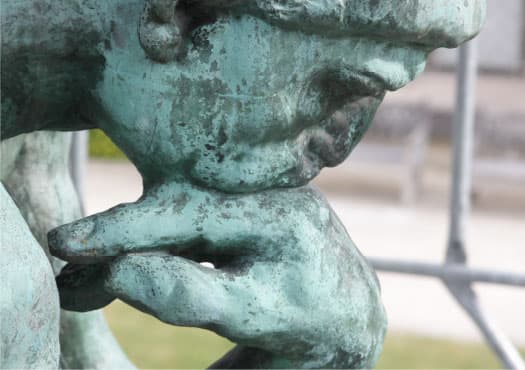
Treating and curing
Preserving the vestiges of the past
ANALYSIS & RESTAURATION
The story always begins with a check-up, to determine the “health” of the work or object, which is essential before being able to propose the conservation and restoration work needed. It may be supplemented by structural studies (X-rays, scans) and polychromy studies when colours are present, for example in the case of painted wooden sculptures. This information will be used to define the conservation operations on the material itself and then its restoration, which will take account of the state of the work after its consolidation, but also how the object to be restored is subsequently to be exhibited (location, position, air-conditioning or not, etc.).
Among the archaeological objects restored by ARC-Nucléart is the Arles Rhône 3 shipwreck, which had been buried in the bed of the Rhone river since the 1st century BC: for practical reasons, it was collected in several sections placed on metal supports, which were rapidly taken to the ARC-Nucléart premises in Grenoble. After cleaning of the sediments and consolidation using the PEG-LYO process and mixed Nucléart one for the prow, which was severely degraded (see article “A facelift for damaged woods”), the restoration operations lasted about two years. They consisted in extracting all the metal nails from the wood, removing the iron oxide conglomerate (see article “Decontaminating wood”) and then reconstituting the sections of the boat by gluing, assembly or juxtaposition, using the support specially designed for this purpose, with the help of a metal specialist working at the same time as the restorers. Sealants and infill were used to fill in the existing gaps, in accordance with professional ethical rules of course and thus with neutral and reversible materials. The infill zones were masked with water-colour touch-up. Finally, a like-for-like reconstitution of a missing part of the prow was made with new wood for the purposes of the museum exhibition.
A Roman chariot wheel, found not far from the boat, was also consolidated and restored by ARC-Nucléart: the final presentation of the object in the vertical position was extremely delicate owing to its fragility and the weight difference between the hub and the outer parts, but once in its working position, the final result is astonishing!
Conserving and restoring a polychrome sculpture requires a preliminary polychromy study phase, either by observation and/or non-destructive in-situ analyses, or by micro-sampling: infra-red techniques can be used to determine the nature of the minerals in the pigments used and sometimes date any paint-overs, X-ray diffraction analyses identify the nature of the compounds (chemical phases) and more sophisticated techniques using synchrotron radiation or fluorescence will give more complete information about the inorganic and organic parts of the materials used. Local or more extensive consolidation work is then carried out with resins and, in the case of extreme degradation, this can go as far as the Nucléart treatment. Finally, specific cleaning operations are carried out: possible removal of paint-overs using chemical or mechanical methods, filling in of any missing material, application of sealants, touching-up and placing on a support to safeguard the sculptures.
For the Virgin and Child of Myans (Savoie), dating from the 16th century - a large (about 1.30 m high) sculpture carved from a single block of wood - the polychrome study revealed three paint-overs: with the consent of its owners, the decision was made to conserve these layers and restore the surface. However, in the case of the equestrian statue from la Charité de Saint Martin (late 16th, 17th century), the colours were uncovered to reveal an unrecognisable coloured sculpted group! n
 More (2 min.)
More (2 min.)
For the 18th year in succession, in partnership with the AMF, CEA is the patron of an operation to save the wooden heritage of small French communes. Thanks to the competition organised by ARC-Nucléart, a total of about 70 works have been selected by a jury of specialists, which selects 3 to 4 winners each year. Since 2015, the competition has been opened to include Romania, which will have its 5th winner in 2019.
All of the work done by ARC-Nucléart is paid for by CEA, from transport up to return of the works, including treatment and disinfestation by gamma irradiation, the various consolidation options and the restoration operations. From among the treatments carried out, CEA promotes nuclear technologies to safeguard the cultural heritage, while significantly helping the communes benefiting from this patronage.
Many objects have been saved in this way!

Saint Germain, Plouay: before/after uncovering of the colours and restoration - © ARC-Nucléart.
Glossary
AMF: Association of the Mayors of France

Treating and curing

Conserving and consolidating

Conserving and consolidating